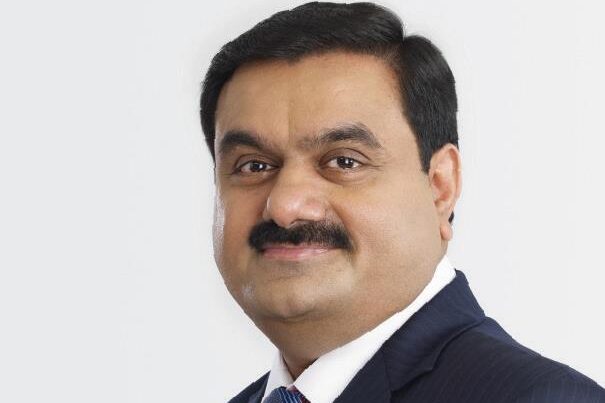Adani Energy Solutions Limited: A profile of the Indian company in Ksh95.6b power lines deal in Kenya

India’s Adani Group has been thrust back into the limelight following a fresh petition by a civil society group in court that seeks to have the law that saw the company awarded a lucrative deal to construct high voltage power transmission lines in Kenya.
This comes barely three weeks after the High Court blocked the Kenya Electricity Transmission Company (KETRACO) from signing the Ksh95.68 billion deal with Adani Energy Solutions Limited, a subsidiary of the Indian conglomerate.
Katiba Institute has moved to court to challenge the constitutionality of some sections of the Public Private Partnerships Act arguing that the exclusion of Parliament from the PPP agreements violates the Constitution.
This comes at a time when public fury has been directed at the government over the secretive Adani deals, one of which is to take over the management of the Jomo Kenyatta International Airport (JKIA) for a period of 30 years.
Even as the court battles against Adani rage, it offers a unique opportunity to dive deep into one of the conglomerate’s subsidiaries, Adani Energy Solutions Limited (AESL).
Adani is owned by billionaire Gautam Adani, who serves as the company’s chairman. Meanwhile, electrical engineer Anil Sardana serves as AESL’s Managing Director.
The company in October reached an agreement with Kenya for construction of three transmission lines and two substations. It will manage the infrastructure for 30 years before handing them back to the Kenya government.
But who exactly are Adani Energy Solutions Limited?
The origin of the company dates back to nearly three decades ago.
The company was founded in 1996 as Adani Power Limited, and originally concentrated on power generation, later evolving to encompass power distribution and energy infrastructure development. It would later rebrand as Adani Energy Solutions Limited to emphasize its pivot to becoming a comprehensive energy solutions provider across India and internationally.
the energy review
Initially, AESL focused on power generation, launching one of the first large-scale thermal power plants in Gujarat, India, which was the country’s largest at the time. Over the years, the company expanded its energy portfolio significantly, diversifying into various forms of energy infrastructure and development projects.
Key Projects Undertaken
The company has since then done major projects, both in India and internationally. The company built the Mundra Thermal Power Plant in India’s Gujarat. It is one of the largest coal-fired thermal plants in India with a capacity of 4,620MW.
The company has since then diversified into renewable energy projects, particularly in wind and solar. AESL installed a 648MW solar power plant in Tamil Nadu, which was one of the largest solar installations in the world when it was commissioned. The firm is targeting to hit a portfolio of 45GW of renewable energy by 2030.
AESL has developed extensive transmission networks in India, including the country’s Western Region Strengthening Scheme (WRSS), which connects states like Maharashtra, Gujarat, and Madhya Pradesh. The company is also investing heavily in distribution, especially in cities like Mumbai, through its acquisition of Reliance Infrastructure’s electricity division.
The Indian company has been actively exploring projects in countries across Southeast Asia and Africa, where energy demand is surging. Notable potential areas include setting up solar farms, wind installations, and transmission networks to support the energy needs of developing nations. Through international expansion, AESL aims to be a key global energy solutions provider.
It is this global expansion drive that has landed the company in Kenya, where it has faced strong opposition from the public, even as the key details about its financial agreements with the Kenyan government remain scanty.
the energy review
However, if all goes to plan, below are the transmission lines and substations that AESL will build in Kenya:
- The 400kV double-circuit Gilgil-Thika-Malaa-Konza Line: Spanning 208.73km, the line will include new substations at Gilgil, Thika, and Malaa, as well as substantial extensions at Konza.
- The 220kV Rongai-Keringet-Chemosit Line: Covering 99.98km, this line will include substations at Rongai, Keringet, and Chemosit.
- The 132kV Menengai-Ol Kalou-Rumuruti line: This is a 89.88km line with substations at Menengai, Ol Kalou, and Rumuruti.
- The 400/220kV Substation at Lessos.
- The 132/33kV Substation at Thurdibuoro.
The AESL deal will make history as Kenya’s first ever PPP project in power transmission. This is worrying consumers, who have asked many questions about what this will mean for the cost of power. Already, President WIlliam Ruto has confirmed that the government will introduce a new tariff that will be used to pay the company.
AESL has agreed a compensation package of $164.09 million (Ksh21.1 billion) annually with Kenya. This will translate to $4,922.7 million (Ksh635 billion) over a 30-year period. It remains to be seen the tariff that the Kenyan government will arrive at for deal, even as KETRACO lines up further PPP projects in transmission.
brian@theenergyreview.com
Discover more from THE ENERGY REVIEW
Subscribe to get the latest posts sent to your email.